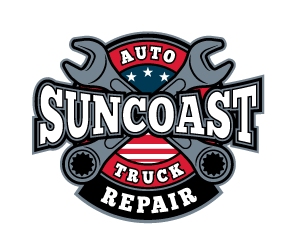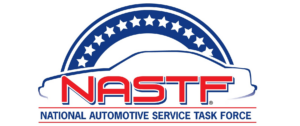Proud Member of NASTF


Are you ready to dive into the world of diesel engine repair? Whether you’re an experienced mechanic or a curious enthusiast, this guide will take you on a journey from troubleshooting to restoration, equipping you with the knowledge and skills to successfully repair a diesel engine. With their robust design and powerful performance, diesel engines are a staple in various industries, from transportation to agriculture. However, they can encounter issues that require timely and efficient repairs. In this comprehensive guide, we will explore the common problems faced by diesel engines, discuss the troubleshooting techniques to identify the root cause, and provide step-by-step instructions on how to restore their optimal functionality. Get ready to roll up your sleeves and master the art of diesel engine repair, as we uncover the secrets to keeping these mighty machines running smoothly.
Diesel engines, while known for their durability and reliability, are not immune to problems. Understanding the common issues that can arise will help you diagnose and repair them effectively. One common problem is the clogging of fuel injectors. Over time, dirt and debris can accumulate in the injectors, leading to poor fuel atomization and combustion. This results in reduced engine performance, increased fuel consumption, and black smoke emissions. Another issue is the failure of the glow plugs. These plugs are responsible for heating the combustion chambers during engine startup. If a glow plug malfunctions, it can cause difficulties in starting the engine, especially in cold weather. Additionally, diesel engines may experience problems with the turbocharger. The turbocharger increases the engine’s power output by compressing incoming air. If the turbocharger fails, it can lead to a loss of power, excessive smoke, and loud whistling noises. By familiarizing yourself with these common issues, you’ll be better equipped to identify and address them during the repair process.
Troubleshooting is an essential part of the diesel engine repair process. It involves systematically identifying and diagnosing the root cause of a problem. Proper troubleshooting saves time and effort by pinpointing the specific component or system that requires attention. Without a thorough troubleshooting process, you may end up replacing parts unnecessarily or overlooking underlying issues. To effectively troubleshoot a diesel engine, start by gathering information about the symptoms and history of the problem. This can include any changes in engine performance, unusual noises, or recent repairs. Next, visually inspect the engine and its components for any obvious signs of damage or wear. Once you have gathered all the necessary information, you can proceed to the diagnostic phase. This involves using specialized tools and techniques to test various engine systems and components. By following a systematic troubleshooting approach, you can save valuable time and avoid unnecessary expenses.
Diagnosing diesel engine problems requires a systematic approach to identify the underlying issues accurately. Start by performing a comprehensive visual inspection of the engine. Look for any signs of leaks, loose connections, or damaged components. This inspection will help you identify any visible problems that may be contributing to the engine’s malfunction. Next, check the fuel system. Inspect the fuel lines, filters, and injectors for any clogs, leaks, or damage. These components play a critical role in delivering the right amount of fuel to the engine for combustion. Any issues with the fuel system can result in poor engine performance or even engine failure. Additionally, examine the electrical system. Check the battery, wiring, and connectors for any loose or damaged connections. Faulty electrical connections can cause starting problems or intermittent failures in various engine systems. Finally, perform a compression test to assess the engine’s internal condition. This test measures the pressure generated during the engine’s compression stroke and helps identify any issues with the piston rings, valves, or cylinder head gasket. By following these diagnostic steps, you can accurately pinpoint the root cause of the engine problem and proceed with the necessary repairs.
To successfully repair a diesel engine, it is essential to have the right tools at your disposal. These tools will help you disassemble, clean, inspect, and reassemble the engine components. One of the most important tools is a comprehensive set of wrenches and sockets. These tools will allow you to loosen and tighten various nuts, bolts, and fasteners during the repair process. Additionally, a torque wrench is crucial for achieving the correct torque specifications when reassembling engine components. A set of screwdrivers in different sizes and types will also be necessary for removing and installing screws and other fasteners. Furthermore, specialized tools such as a compression tester, fuel pressure gauge, and multimeter are essential for diagnosing specific engine problems. These tools provide valuable information about the engine’s condition and help identify the faulty components. Finally, a sturdy engine hoist or crane is necessary for safely removing and reinstalling the engine. By investing in these essential tools, you’ll be well-equipped to tackle any diesel engine repair job that comes your way.
Before diving into the restoration process, it is crucial to prepare the engine and the workspace properly. Start by thoroughly cleaning the engine and its components to remove any dirt, grease, or debris. This will ensure that you have a clear view of the engine and prevent contaminants from entering critical areas during the repair. Next, gather all the necessary replacement parts and materials. This includes gaskets, seals, bearings, and any other components that need to be replaced. Having all the parts on hand will save you time and prevent delays during the restoration process. Additionally, prepare a clean and organized workspace with ample lighting and ventilation. This will make it easier to work on the engine and ensure your safety throughout the repair process. By properly preparing the engine and the workspace, you can set yourself up for a smooth and efficient restoration process.
The first step in restoring a diesel engine is disassembling it. Start by disconnecting the battery and removing any electrical connections attached to the engine. Next, drain the engine oil and coolant to prevent any spills during the disassembly process. Once the engine is properly drained, remove any external components, such as the air intake system, fuel lines, and exhaust system. Label and organize all the removed components to ensure easy reassembly later. With the external components removed, you can now proceed to disassembling the internal components. This involves removing the cylinder head, pistons, connecting rods, and crankshaft. Take note of the position and orientation of each component as you remove them, as this will be crucial during the reassembly process. As you disassemble the engine, carefully inspect each component for any signs of damage or wear. This will help you identify any additional parts that need to be replaced during the restoration process.
After disassembling the diesel engine, it’s time to clean and inspect the individual components. Start by thoroughly cleaning each component using a suitable solvent and a brush. This will remove any dirt, oil, or grime from the surfaces and ensure that you have a clear view of the components during the inspection. Once the components are clean, inspect them for any signs of damage or wear. Look for cracks, scoring, or excessive wear on the cylinder walls, pistons, and connecting rods. Check the condition of the bearings, valves, and seals for any signs of wear or damage. If any components are found to be damaged or worn beyond acceptable limits, they should be replaced with new ones. Additionally, measure the tolerances of critical components, such as the pistons, crankshaft, and bearings, using precision measuring tools. This will help you determine if any machining or further repairs are necessary during the restoration process.
Once the engine components have been cleaned, inspected, and measured, it’s time to start the rebuilding process. Begin by replacing any worn or damaged components with new ones. This may include pistons, piston rings, bearings, valves, or seals, depending on the condition of the original parts. Ensure that all replacement parts are properly lubricated before installation to prevent any premature wear or damage. As you reassemble the engine, refer to the manufacturer’s specifications and torque values to ensure that everything is tightened to the correct specifications. Use a torque wrench to achieve the recommended torque settings for each fastener. Additionally, carefully follow the recommended sequence for tightening bolts and nuts to prevent any distortion or misalignment of the components. By meticulously rebuilding the engine and replacing worn or damaged parts, you’ll restore its optimal performance and reliability.
After the diesel engine has been reassembled, it’s time to test its functionality and fine-tune the performance. Start by filling the engine with the appropriate amount and type of oil and coolant. Ensure that all fluid levels are within the recommended range. Next, reconnect the battery and any electrical connections that were disconnected during the disassembly process. Before starting the engine, perform a thorough visual inspection to ensure that all connections, hoses, and components are properly installed and secured. Once you’ve completed the visual inspection, start the engine and let it idle for a few minutes to allow the oil to circulate throughout the engine. Listen for any unusual noises or vibrations that may indicate a problem. If everything sounds and feels normal, gradually increase the engine speed and monitor its performance. Check for any leaks, abnormal smoke emissions, or irregularities in engine operation. If any issues are detected, promptly address them to prevent further damage. Fine-tuning the engine may involve adjusting the fuel injection timing, valve clearances, or other parameters to optimize performance and fuel efficiency. By thoroughly testing and fine-tuning the restored diesel engine, you’ll ensure that it operates at its best.
To keep your diesel engine running smoothly after the restoration, regular maintenance is crucial. Here are some essential maintenance tips to follow:
By following these maintenance tips, you’ll extend the life of your diesel engine and minimize the need for future repairs.
Repairing a diesel engine requires knowledge, skill, and patience. By understanding the common problems faced by diesel engines and employing effective troubleshooting techniques, you can accurately diagnose and repair these issues. With the right tools, proper preparation, and systematic disassembly and reassembly, you can successfully restore a diesel engine to its optimal functionality. Regular maintenance will ensure that your restored engine continues to operate at its best. So, whether you’re a seasoned mechanic or a passionate enthusiast, don’t shy away from the challenge of diesel engine repair. Embrace the opportunity to learn and master the art of keeping these mighty machines running smoothly. With dedication and perseverance, you’ll become a diesel engine repair expert in no time.




